Middleburg Film Festival 2017
Written by: Christopher Llewellyn Reed | October 29th, 2017
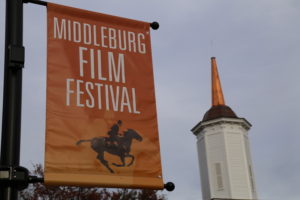
Founded in 2013, the Middleburg Film Festival just celebrated its fifth anniversary, running from October 19-22. Located approximately an hour from Washington, DC, in Middleburg, Virginia, the festival screens films in such a beautiful part of the state that it is almost difficult to go indoors to watch the movies, themselves. Almost. Since founder Sheila Johnson and her team of programmers do such a great job bringing important upcoming films to their venue, however, the selections are tempting enough to overcome any reservations about neglecting the charming sights of the surrounding area. I attended last year, as well (and also published my coverage on this site), and though I was able to see one more film this time around, that’s still only 8 out of the 27 films shown. So many cinematic riches, so little time! What follows is my assessment of those 8 films, with brief capsule reviews of each, in order of preference.

1. Lady Bird (Greta Gerwig, 2017)
Actress Greta Gerwig’s directorial debut is a sharply observed coming-of-age dramedy featuring a stellar cast. Set in Sacramento, Gerwig’s hometown, the film stars Saoirse Ronan (Brooklyn) as Christine – or “Lady Bird,” as she prefers to be called – a young woman about to graduate high school who has very little sense of what she should do next. Her relationship with her mother (an excellent Laurie Metcalf, Jackie Harris on ABC’s long-running Roseanne) is fraught, but that is only one of the many things going wrong. And though this is well-trod cinematic territory, Gerwig (Frances Ha) – the writer, as well – makes every situation fresh and insightful. Tracy Letts (Indignation), Lucas Hedges (Manchester by the Sea) and Beanie Feldstein (Neighbors 2: Sorority Rising) are just some of the fine actors who make up the rest of the ensemble. As good as are the performances, what particularly impresses are the film’s production design (rendering the recent past of 2002, not so easy because so familiar, yet not) and economical editing (by which Gerwig wastes little time on unimportant information). A film both moving and funny in equal parts, it announces a major new talent behind the camera, and I, for one, look forward to many more films helmed by Ms. Gerwig.
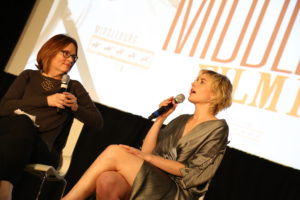
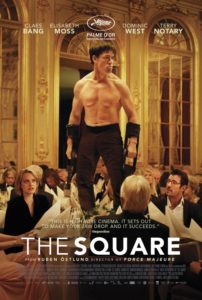
2. The Square (Ruben Östlund, 2017)
Close behind is The Square, Swedish director Ruben Östlund’s follow-up to his 2014 Force Majeure. As in the previous film, Östlund examines the breakdown of carefully constructed systems of behavior. Here, he uses the mainstream art world as the backdrop to a discussion of privilege and power. Danish actor Claes Bang (Young Sophie Bell) plays Christian, the chief curator of Stockholm’s (fictional) X-Royal Museum, who oversees a vast array of modern-art exhibits that are the very definition of cutting-edge, at least as he explains it to an impressionable young American journalist played by Elisabeth Moss (Queen of Earth). Soon, though, this seemingly impregnable kingdom (the museum is even housed in a former palace), is laid siege by various problems from the outside world, and Christian’s own privilege, which he wields in a manner simultaneously cavalier and charming, comes under threat. With excellent supporting work all around, especially from motion-capture performer Terry Notary (movement choreographer on Dawn of and War for the Planet of the Apes) – who plays an out-of-control conceptual artist lost in his role of a gorilla in one of the movie’s most disturbing scenes – The Square is a thrilling indictment of hierarchy, wealth and class, deservedly the winner of this year’s Palme d’Or at the Cannes Film Festival. It’s also overlong, which takes away from the perfection, but still very watchable.

3. I, Tonya (Craig Gillespie, 2017)
Headlined by a mesmerizing Margot Robbie (The Legend of Tarzan) as disgraced former ice-skater Tony Harding, I, Tonya approaches its subject with a twinkle in its cinematic eye that powers the film through material grim and droll. There is plenty of both to go around, though Harding’s tale – at least as told here – is ultimately a tragic one. The first American woman to complete a triple axel jump, in 1991, she never quite lived up to subsequent expectations, and in 1994 was peripherally involved in an attack on rival skater Nancy Kerrigan, the consequences of which led to her being permanently barred from all future skating competitions. I was very much alive and conscious of skating at the time, and remember thinking how sordid the affair was. Little did I know how much, assuming even half of what we see here is true. Harding’s story of abuse at the hands of her mother (brilliantly played by Allison Janney, The Way Way Back), and later boyfriend/husband, is harrowing and deeply sad, but is also (successfully) played for laughs (when appropriate). Director Craig Gillespie (Million Dollar Arm) and screenwriter Steven Rogers (Love the Coopers) start the story with a disclaimer that sets the tone for everything that follows, stating that everything we are about to see is based on actual “irony-free” interviews with all participants. The rest of the film continues with alternating reenactments of those interviews and of the events they describe. It’s a crazy mix, but it mostly works, only faltering in its approach a few times. Triple Axel? Three cheers for Tonya!

4. Joan Didion: The Center Will Not Hold (Griffin Dunne, 2017)
The lone documentary I saw at the festival, Joan Didion: The Center Will Not Hold (now screening on Netflix), made by the subject’s nephew – actor/director Griffin Dunne (Amazon’s I Love Dick) – is an artistically intriguing portrait of writer Joan Didion‘s life and career, though perhaps too abstruse at times to appeal to the uninitiated. Dunne seems to take it for granted that a large swath of his audience knows who Dunne is and why she is important. Though he does explain the historical context of her work, and show the progression of it, the lack of initial set-up telling us why we should care about Didion may make the film less accessible to those not in the the know. Otherwise, he does a fine job walking us through the various highlights of Didion’s accomplishments, as well as the low points in her personal life, including the death of her husband, the writer John Gregory Dunne, in 2003, and of their adopted daughter Quintana, in 2005. Impressionistic at times, but always emotionally compelling, the movie pays fitting tribute to one of the great essayists of the 20th century.
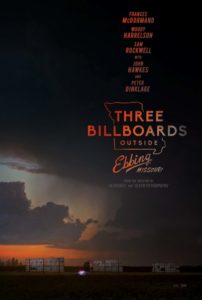
5. Three Billboards Outside Ebbing, Missouri (Martin McDonagh, 2017)
I loved the first half of this movie. Playwright/film director Martin McDonagh (In Bruges, Seven Psychopaths) is a longtime master of the comedy of the macabre, and does not disappoint, at least initially. The peerless Frances McDormand (Burn After Reading) plays Mildred, a woman consumed with grief over the recent grisly rape/murder of her daughter, which remains unsolved. Angry at the lack of progress in the investigation, she puts up taunting reminders of police inaction on three billboards just outside of town. This gesture proves inflammatory (both metaphorically and literally) and soon hell does, in fact, break loose. Woody Harrelson (The Edge of Seventeen) plays the hapless local sheriff, and Sam Rockwell (Better Living Through Chemistry) his volatile deputy, with many more accomplished actors – including Lucas Hedges (see Lady Bird, above), Peter Dinklage (Tyrion Lannister on HBO’s Game of Thrones), John Hawkes (The Sessions) and Clarke Peters (Lester Freamon on HBO’s The Wire) – rounding out the impressive cast. Unfortunately, about halfway through, the balance of humor and violence shifts, for me, too far in favor of the latter, and begins to repel. That is most likely McDonagh’s intention, but it makes for unpleasant viewing. Also, the problem with witty screenwriters like McDonagh (and Aaron Sorkin, as well), is that they often craft lines that are too clever by half, perfectly constructed bon mots that in no way should emerge from the mouths of the characters, as written. Yes, they sound good, but kick this viewer out of the story when other parts break down, as they do here. Mixed tones can work, but a mixed bag is a problem.
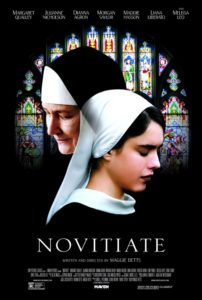
6. Novitiate (Margaret Betts, 2017)
I very much enjoyed individual scenes in this look back at the effects of Vatican II on an American convent in the early 1960s. Margaret Qualley (The Nice Guys) plays Cathleen, a young woman raised Catholic, but without any religious fervor on the part of her mother (a stunning Julianne Nicholson, Black Mass), who is both mystified and heartbroken when her daughter decides to take vows. Life in the convent quickly becomes complicated with the passage of the Church’s reform efforts, and the film attempts to be both a movie about faith (and its consequences) and an examination of the difficulties of change in entrenched institutions. Unfortunately, writer/director Margaret Betts (The Carrier) – whose first fiction feature this is – is never quite able to square the circle of narrative intent, leaving us constantly wondering what kind of movie she is, in fact, trying to make. And though Qualley and Nicholson act their hearts out, Melissa Leo (The Fighter) delivers a nearly lifeless performance as the Mother Superior. The rest of the cast is hit or miss, as is the movie. But there are those scenes, particularly some between the novitiates, that almost make the entire affair worth watching. With a better script, Betts could be a great director, yet.
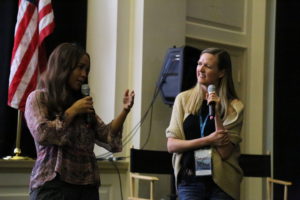
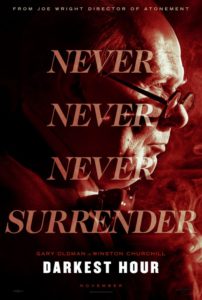
7. Darkest Hour (Joe Wright, 2017)
Unbearably dull, and consumed by an overwhelming sense of its own self-importance, Darkest Hour fails to impress, except in its casting, against type, of actor Ben Mendelsohn (Danny on Netflix’s Bloodline) as King George VI. Gary Oldman (Tinker Tailor Soldier Spy) plays Winston Churchill, and delivers a credible performance only minimally hampered by the excessive make-up and fat suit they make him wear. The story is not without potential interest, following Churchill’s rise to the post of British Prime Minister – in the face of major opposition within his own party – as the Nazis conquer France, but screenwriter Anthony McCarten (The Theory of Everything) fails to take advantage of the drama at hand, and no matter how much director Joe Wright (Anna Karenina) frenetically moves the camera or tries to generate emotion through an over-reliance on the score by his longtime composer Dario Marianelli, the script remains flat. Much ado about much should be more than this, but instead gives us mostly nothing.
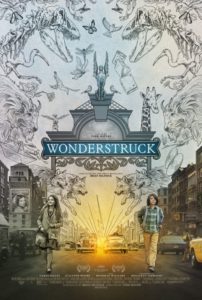
8. Wonderstruck (Todd Haynes, 2017)
How I wish I did not dislike this movie so much. Its intentions are good, and it features a strong performance from young newcomer Millicent Simmonds, a deaf actress cast in a deaf role (something we don’t see very often), but such things do not a good film make, on their own, alas. Based on Brian Selznick’s 2011 half-text/half-graphic novel of the same title, Wonderstruck follows two parallel stories, the one in 1927, the other in 1977, each with a child at its center. In the book, the earlier story is the one told in pictures, while the more modern tale is related in text, a device which allows Selznick to interrupt the one with the other in dramatic fashion. Unfortunately, director Todd Haynes (Carol), usually a reliable filmmaker, especially in the arena of production design, does nothing more interesting in the older scenes than film them in black & white, with sets that evoke no period mood at all, though Simmonds is quite fine on her own. The rest of the cast is uneven, and even the great Julianne Moore (Still Alice) barely rises above the trite emotions of the script … until the last act, when the movie suddenly comes alive – inspired by New York’s famed city diorama, in Queens – rising to magical heights of creative design. Where, one asks, was this inspiration, before? It almost makes up for the insipid mess of the earlier scenes, but not quite. I have admired Haynes’ work until now, and hope to again in the future, but I cannot endorse this one.
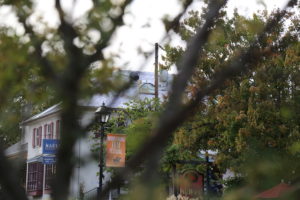
So that makes 4 films I can wholeheartedly recommend, with two others in which I still liked significant portions, and only two that didn’t work for me at all. Not a bad ratio. Overall, then, I can once more announce that this is a great festival to attend, although hotel rooms in the area remain expensive: I stayed, yet again, in a hotel near Dulles Airport. Most movies – which, with a few exceptions, screened twice – had at least one screening with some of the film’s participants in attendance (as you can see in some of this article’s accompanying photographs). I plan to come back next year. Perhaps I’ll see you there?

